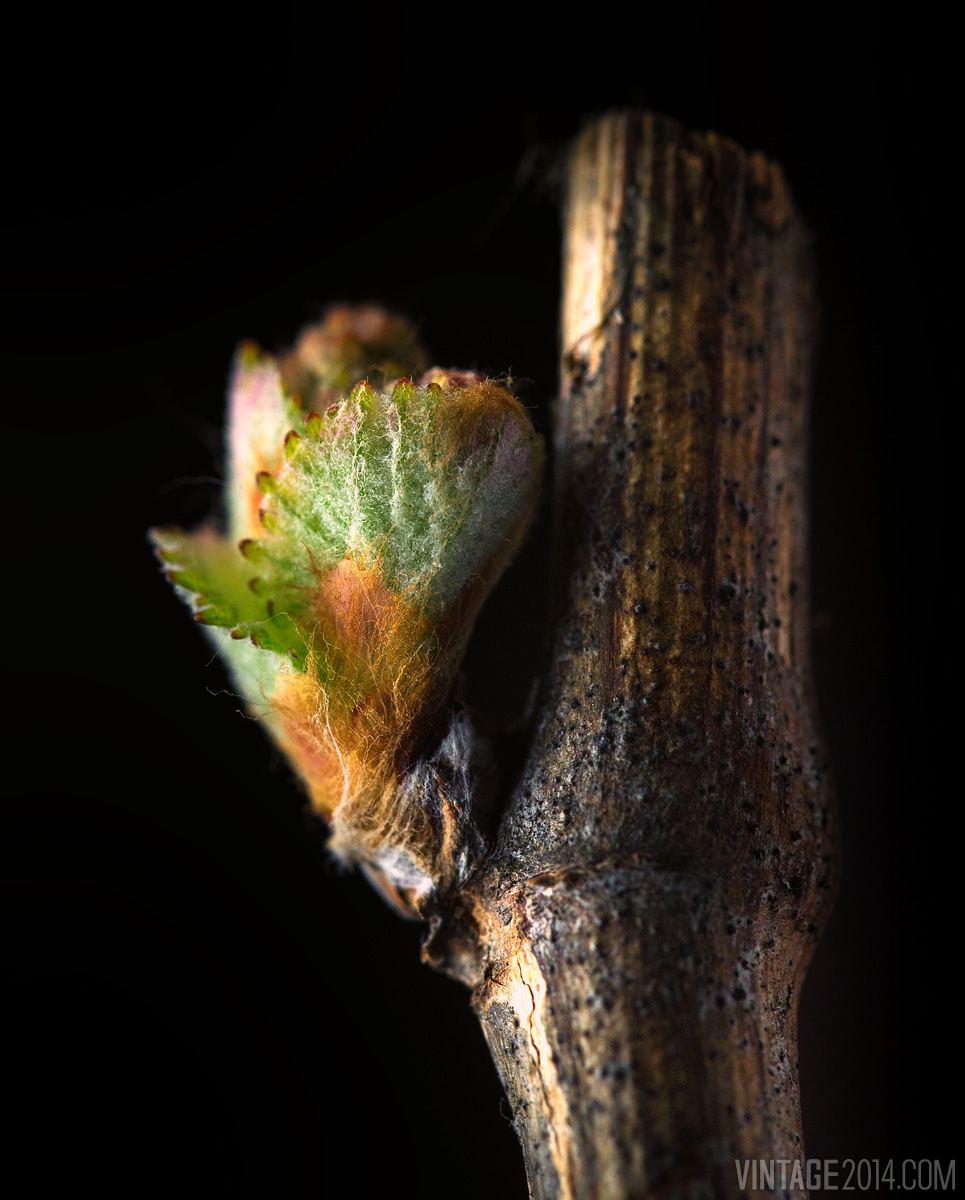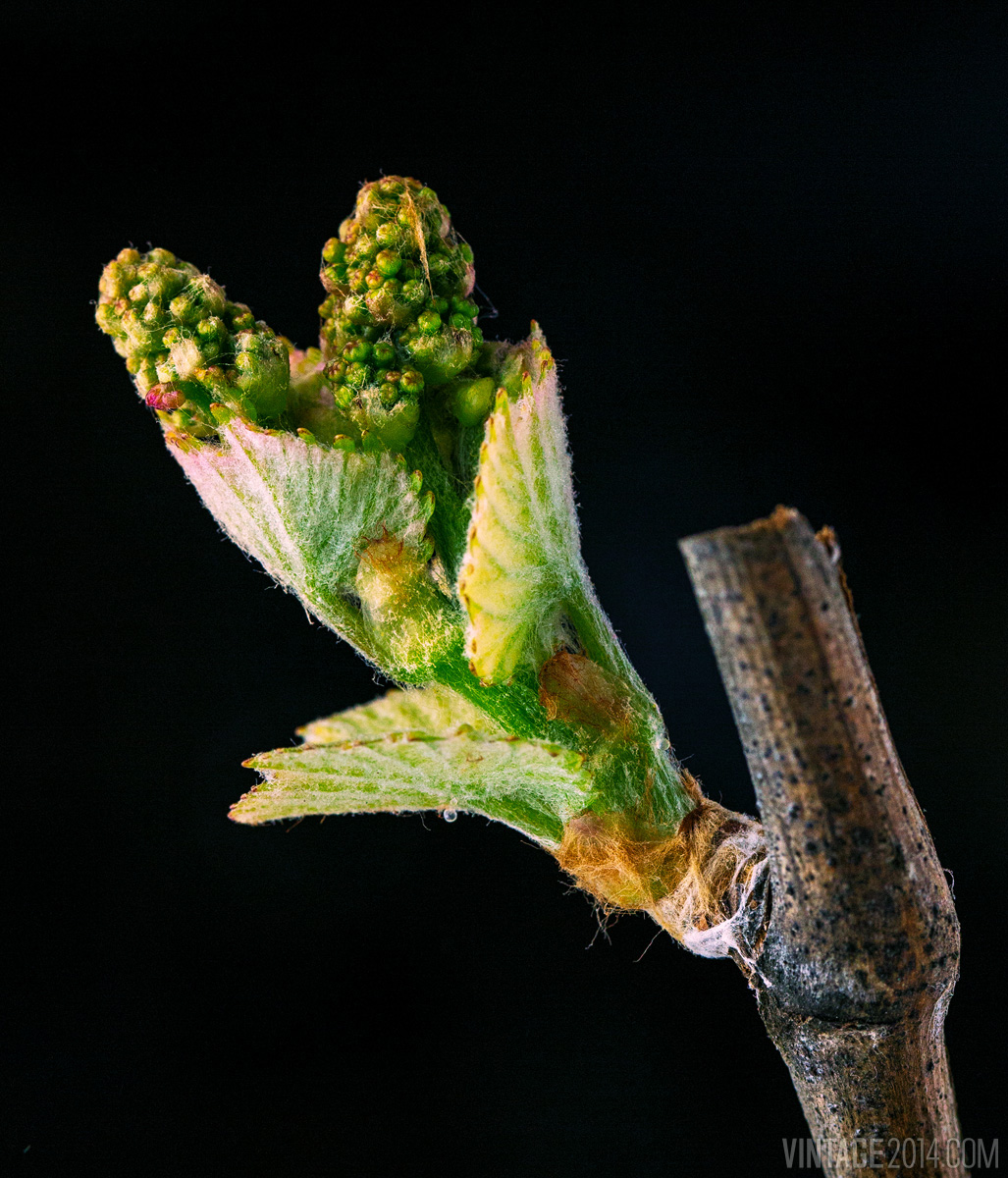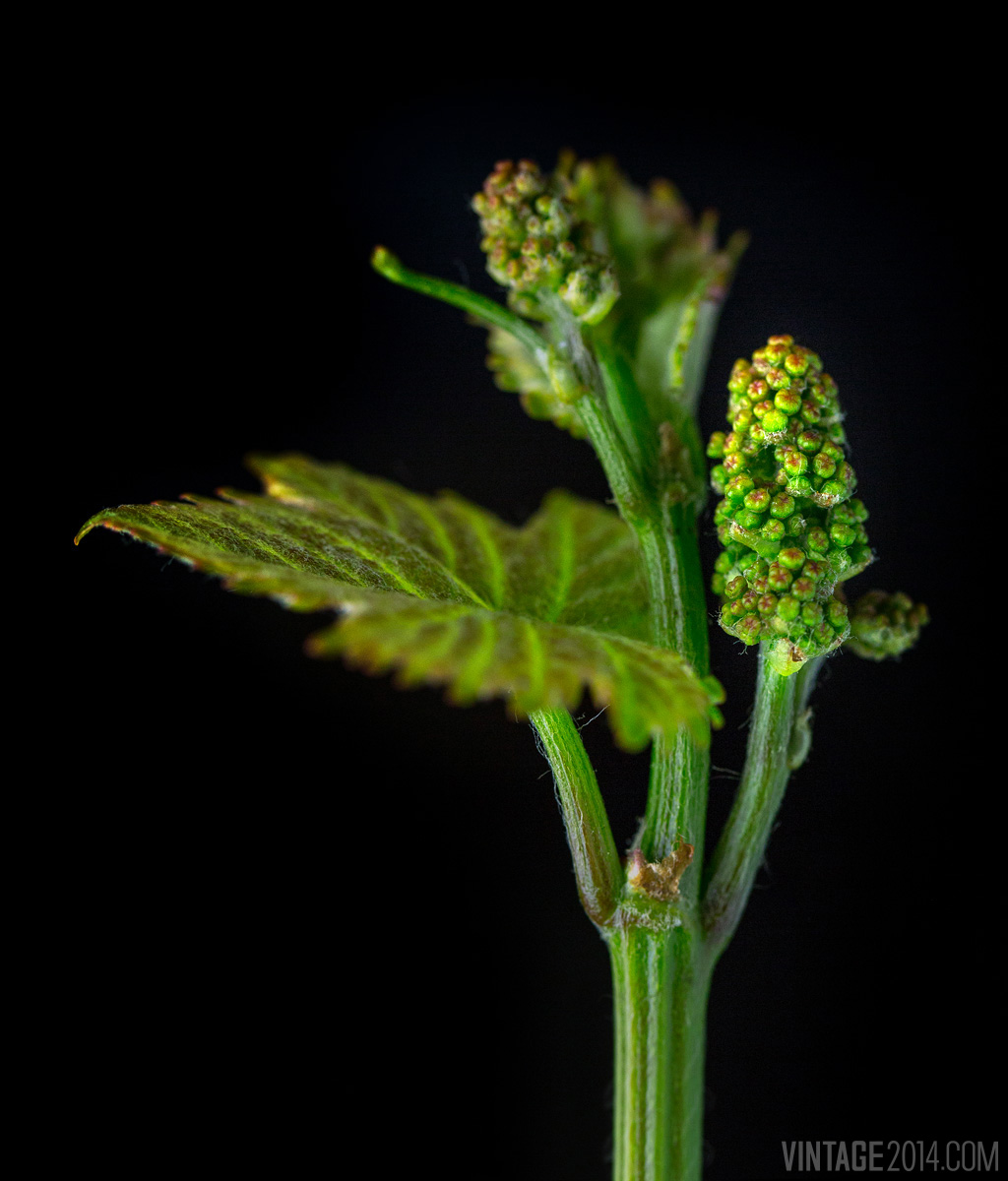This photograph depicts the bud at the very beginning of bud break, when the first leaves enclosing the tiny bud have just begun to unfurl. The fuzzy leaves help to protect the fragile immature cluster from frost and disease.
This is a crucial time for the tiny bud, which can easily be damaged by cold temperatures. To combat unpredictable and damaging weather, wine farmers will use overhead sprinklers during frost season to create an insulating layer of ice around these newly formed buds, protecting them from damage … to an extent.

As the bud evolves, the fuzzy filament of the new leaves disappears and reveals a smooth, waxy structure. This is an indication that dormancy is officially over and the growing season has begun, but at this phase, the grape vine is susceptible to frost and other dangers.
The immature Pinot Noir cluster emerges from the bud.

The word “Pinot” refers to the pinecone-shaped cluster seen here. Each green pod is a single grape protected with a cap. After flowering in the spring, the little cap will fall off and reveal the individual grape.
Approximately five days after bud break, the entire young grape cluster has materialized completely, and the first tendril begins to come into sight. The tendril is vitally important in assisting the grape vine to cling to a support, like a trellis, and to pull itself upward towards the sun. Centuries ago, grape vines actually grew in trees in order to steal the maximum amount of sunlight and grow to their fullest potential.

